Predictive Pest Models: How They Work
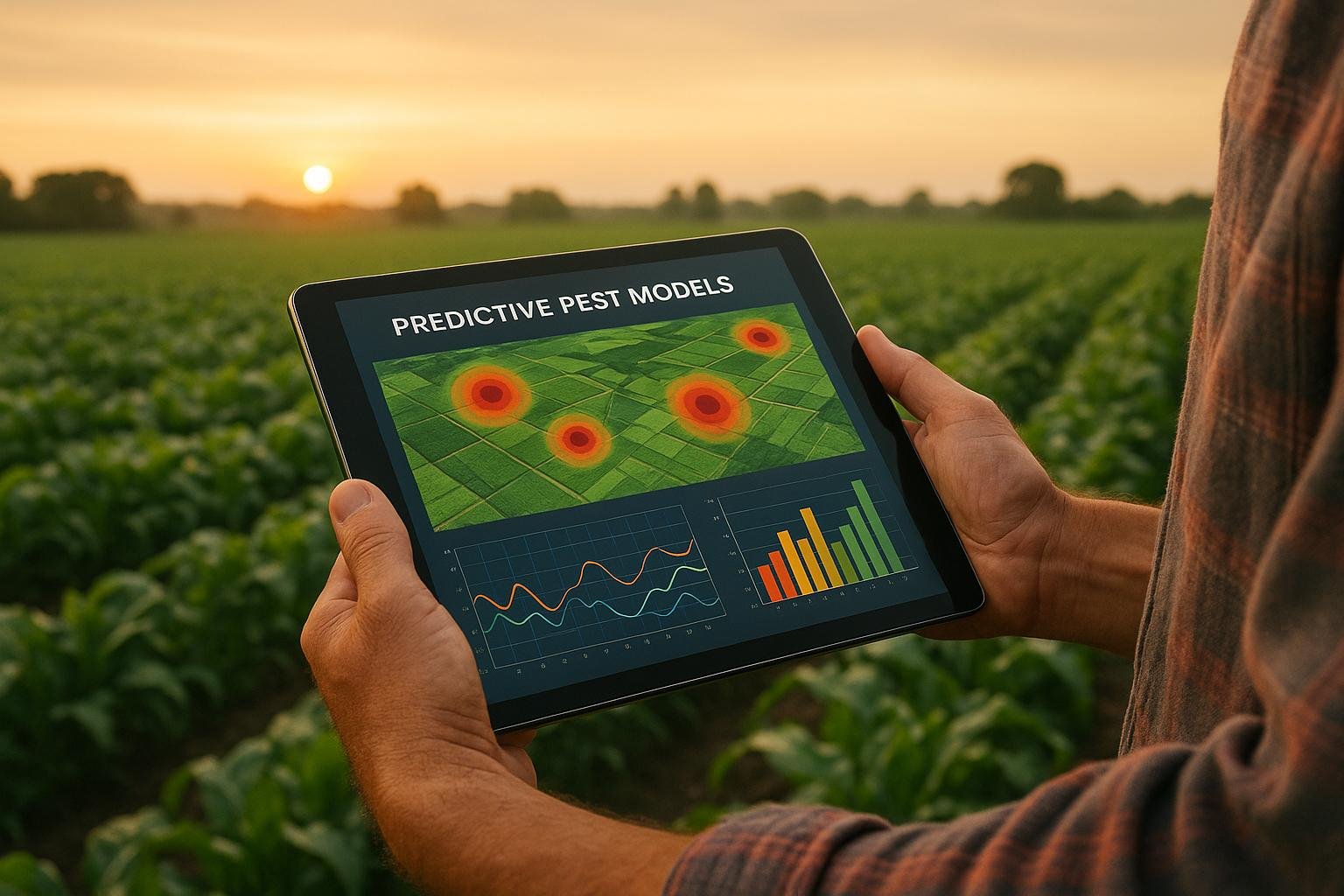
Predictive pest models use data like weather, soil conditions, and crop health to forecast pest outbreaks before they happen. These models combine historical trends with real-time inputs from tools like sensors and cameras, helping farmers and gardeners make informed decisions. By reducing pesticide use by 25–40% and improving crop yields, they promote smarter pest control practices.
Key Insights:
- Data Sources: Weather patterns, soil metrics, and pest records are crucial for predictions.
- Technology Role: AI and machine learning analyze data to identify pest risks with up to 85% accuracy.
- Practical Impact: Farmers can reduce chemical use, save costs, and protect crops.
- Real-World Examples: Tools like Semios and Trapview have shown success in managing pests efficiently.
Predictive pest models are transforming pest management into a precise, data-driven process, helping both large-scale agriculture and home gardening thrive.
Weather based Pest Prediction Overview

Data Collection: The Foundation of Predictive Models
Accurate data is the cornerstone of effective pest prediction, shaping the decisions that drive garden and crop management. The reliability of any pest prediction model hinges on the quality and range of data it uses. Without dependable information - like environmental conditions, pest behavior patterns, and historical outbreak records - even the most advanced algorithms can falter. Simply put, good data equals better predictions. Let’s break down the essential types of data that power these models.
Types of Data Used in Pest Prediction
For predictive pest models to work effectively, they rely on several critical data types:
- Weather Data: This includes temperature, humidity, rainfall, and wind patterns - all of which influence pest life cycles and movement.
- Historical Pest Records: Past infestation data helps identify seasonal trends and recurring outbreak patterns.
- Real-Time Sensor Inputs: IoT sensors provide continuous updates on soil moisture, temperature, and humidity - key factors that create pest-friendly environments [2].
- Crop Health Data: Information like plant growth stages, stress indicators, trap counts, and damage assessments rounds out the dataset. These insights help assess a crop’s vulnerability to pests.
Sources of Data and Collection Methods
Gathering this diverse array of data requires a mix of cutting-edge technology and tried-and-true methods:
- Weather Stations: These provide hyper-local climate data, measuring temperature (in Fahrenheit), rainfall (in inches), and wind speed (in miles per hour). The market for IoT-based weather stations is projected to grow by over $29.6 million by 2026, with an annual growth rate of 7.09% [6].
- IoT Sensors: Deployed across fields, these sensors monitor environmental factors like soil temperature, moisture, and air humidity around the clock. They send data wirelessly for centralized analysis, often complementing broader weather station insights [2].
- Image-Based Monitoring: Cameras and drones capture visual data on crop conditions and pest activity. These tools can cover large areas quickly, and advanced systems even use AI to identify specific pest species and count their populations.
- Traditional Scouting: Field scouts still play a vital role, walking through crops to inspect plants for pests, damage, or stress. A typical scouting routine involves checking at least 10 plants and covering 100 square feet at five different points within a field section [7]. This hands-on approach provides detailed, localized data that complements automated systems.
Ensuring Data Accuracy and Quality
The accuracy of collected data directly impacts the reliability of pest predictions. High-quality data reduces errors, improves decision-making, and minimizes unnecessary pesticide use.
- Clear Protocols: Establishing strict guidelines for data collection ensures consistency, identifies valid sources, and specifies the tools needed for accurate measurements [8].
- Sensor Calibration and Validation: Regularly calibrating sensors and weather stations helps maintain accuracy. Validation processes are also essential to catch errors before they affect predictions.
- Localized Models: Using degree day models tailored to specific regions enhances precision, as these models account for local environmental conditions [7] [8].
- Technology Integration: Tools like GIS systems, remote sensing, and environmental modeling software can identify inconsistencies, fill data gaps, and improve overall reliability [8].
For example, one farm used soil moisture and temperature sensors to predict pest-friendly conditions, cutting pest-related damages by 50% over three years [3]. Similarly, a group of grape growers leveraged geospatial data to assess powdery mildew risks, reducing disease incidence by 40% [3].
Poor data quality doesn’t just lead to ineffective pest management - it can also result in unnecessary pesticide use and erode public trust in agricultural practices [8]. Investing in accurate data collection isn’t just smart - it’s essential for sustainable farming.
Core AI and Machine Learning Techniques in Pest Prediction
With access to quality data, AI algorithms can process thousands of data points to accurately predict pest behavior.
Algorithms That Drive Predictive Models
Modern pest prediction systems are built on various AI techniques. For example, deep learning is particularly effective for image-based pest identification, achieving accuracy rates between 70% and 98% [5].
Other widely used methods include Random Forests and Gradient Boosting algorithms. These techniques analyze environmental factors like temperature, humidity, rainfall, and historical pest data, excelling at interpreting the complex, non-linear relationships between these variables [10].
Several innovative tools showcase the power of machine learning (ML) in pest management. Penn State University’s "Plant Village" app uses ML to diagnose pests and plant diseases from user-uploaded images [4]. Similarly, the University of Georgia’s "PestID" app identifies insect pests through smartphone camera images [4]. AgShift’s "DeepAgro" platform takes this a step further, employing deep learning to analyze crop images for signs of pest infestations and diseases. This automation significantly reduces the manual effort traditionally required for monitoring [4].
Training Models with Local Data
For pest prediction models to work effectively, they need to be trained on data that reflects local conditions. Models based on generic datasets often fall short because pest behavior varies widely depending on climate, soil, and agricultural practices.
Tamil Nadu Agricultural University (TNAU) provides a strong example of localized model training. They developed an Android app that uses transfer learning and deep convolutional neural networks (DCNNs) to identify fall armyworm infestations in maize crops. The app achieved 93.47% accuracy during validation and 98.47% during training [4].
Incorporating local environmental data is equally critical. Factors like regional climate significantly influence pest behavior, making it essential to integrate these variables into predictive models [10]. Davis Instruments exemplifies this approach with their Mobilize app, introduced on June 11, 2024. Using high-resolution data from Davis weather stations, the app offers pest risk assessments tailored to specific fields. Users can select their crop and pest models to view risk levels - high, moderate, low, or unknown - alongside information about insect stages and Growing Degree Day (GDD) accumulation [9]. This focus on local conditions enhances the accuracy and relevance of pest predictions.
Understanding Seasonal and Weather Patterns
By incorporating seasonal and weather patterns, AI models have become even more precise in their predictions. These systems analyze how temperature influences insect behavior to accurately forecast lifecycle events [12]. Sequential algorithms, which use time-series analysis, are particularly effective at identifying seasonal pest cycles, outperforming models that rely solely on historical averages [11].
A striking example comes from research on the brown planthopper in Eastern Asia. Scientists developed a forecasting model that combines early-season population data with climate forecasts, enabling them to predict migration and outbreaks 2–3 months in advance. This model achieved a correlation of approximately 0.6 with actual observations [11]. Similarly, researchers have used seasonal climate data to predict green leafhopper populations and assess risks for rice tungro disease by integrating population models with virus-vector dynamics [11].
The SAFARIS (Spatial Analytic Framework for Advanced Risk Information Systems) platform demonstrates how seasonal data can be applied in practice. This web-based tool combines weather, climate, and pest biology data to build predictive models that incorporate phenology - the timing of developmental stages influenced by temperature exposure over time [13].
Unlike traditional pest management, which often relied on historical averages, modern AI models can detect deviations in current weather patterns and adjust predictions accordingly. This flexibility is especially crucial as climate change introduces more unpredictable weather conditions, leading to shifts in pest behavior that were previously unseen.
sbb-itb-4d6a8dd
🚀 Ready to Reinvent Your Garden?
Join thousands of homeowners who have transformed their gardens using our AI design tool. Upload one photo to explore endless possibilities.
Get your AI garden designs →Turning Model Outputs into Actionable Insights
Predictive pest models take raw data and turn it into practical, easy-to-follow actions.
How Predictions Are Displayed
Modern pest prediction systems rely on user-friendly visuals to communicate their findings. For instance, risk maps use color-coded zones to show varying pest threat levels across gardens or landscapes. A great example is the GIS-based tool developed by the Central Institute for Decision Support Systems in Crop Protection (ZEPP) under the CYDNIGPRO project. This tool creates detailed risk maps for pea moth infestations, with risk buffers tailored to different cultivation types [18].
These systems also provide continuous risk scores to encourage early intervention [1]. Trend curves offer a clear view of how pest risks evolve over time, often integrating weather data like temperature, humidity, and rainfall to show how these factors influence pest activity. These visuals make it easier to act quickly and effectively.
Converting Predictions into Actions
Predictive models offer targeted solutions. They identify specific areas that need treatment, cutting down unnecessary pesticide use by 30% while maintaining crop yields [15].
Timing is another key advantage. By analyzing local weather patterns and pest life cycles, these models pinpoint the best windows for treatment, turning pest management into a science rather than a guessing game.
Resource management also becomes smarter. Instead of preparing for worst-case scenarios, gardeners can use risk forecasts to tailor their supply orders. This approach has been linked to a 10–15% increase in crop yields, thanks to more efficient resource use [14].
For example, the IBM Watson Decision Platform has demonstrated an impressive 18–20% boost in crop yields while simultaneously reducing resource consumption [14]. These precise, data-driven actions are reshaping how gardening and landscaping are managed day-to-day.
Practical Uses for Gardeners and Landscapers
Thanks to these actionable insights, gardeners and landscapers can now adopt smarter strategies. Preventive measures, for example, help tackle pest issues before they escalate. If models predict a higher risk due to warm and humid conditions, gardeners can adjust watering schedules and improve air circulation around vulnerable plants [1].
Risk maps are also valuable for guiding pesticide use and resource planning. Tools like ZEPP’s risk maps enable users to identify lower-risk planting areas, ensuring decisions are based on data rather than guesswork [18]. For landscapers managing multiple properties, shared risk data can help distribute pest-attracting plants more evenly, reducing overall pest pressure [18].
Seasonal planning also benefits. For instance, farmers in the Midwestern United States using Bayer CropScience Climate FieldView adjusted irrigation schedules based on predictive rainfall patterns. This approach led to a 10–15% increase in crop yields, even during periods of drought [14].
Adding Predictive Pest Models to Garden Management
Incorporating predictive pest models into your garden management routine can transform your approach from reactive to proactive, creating a system that's guided by data and grounded in proven pest management principles. Here's how to make it work.
Steps for Using Predictive Models
At the heart of predictive pest management lies Integrated Pest Management (IPM). According to Penn State Extension, IPM is a science-based strategy that considers the entire ecosystem to manage pests effectively [19].
"Integrated pest management (IPM) is an ecosystem-based strategy that focuses on long-term prevention of pests or their damage through a combination of techniques such as biological control, habitat manipulation, modification of cultural practices, and use of resistant varieties." [21]
To get started, identify the plants in your garden and the pests they commonly attract [20]. This information forms the backbone of predictive models. Penn State Extension suggests creating a detailed inventory, including plant types, pest lifecycles, and potential control methods based on your tolerance for insect damage. For instance, they outline the lifecycle of the Japanese Beetle when discussing pest management for common beans.
Regular monitoring of your garden is essential. By keeping track of pest activity and environmental conditions, you provide real-time data that helps refine model predictions [19]. Historical observations are equally important - recording seasonal patterns allows your predictive system to adapt and improve its accuracy over time [20].
Predictive models are particularly effective at identifying high-risk periods, helping you time preventative measures more efficiently. These steps are the foundation for integrating predictive analytics into tools like AIGardenPlanner.
Using Predictive Models with AIGardenPlanner

AIGardenPlanner takes predictive pest management to the next level by combining AI-driven insights with these foundational practices. Its location-based plant suggestions and growing guides provide the critical data needed to forecast pest activity based on your region and climate.
When designing your garden, the platform’s AI Plant Advisor can recommend pest-resistant plant varieties tailored to the pests forecasted for your area. This approach tackles potential pest issues during the planning stage, rather than waiting for them to arise.
Additionally, AIGardenPlanner’s maintenance schedules can incorporate predictive pest insights. For example, if the system predicts increased Japanese Beetle activity due to specific weather conditions, it can adjust schedules to include targeted preventative measures during those peak periods. This integrated strategy streamlines pest management while optimizing plant care.
For professional landscapers, AIGardenPlanner offers tools to scale predictive pest management across multiple properties. With its Premium plan, which supports up to 1,000 projects, landscapers can use shared risk data to make informed decisions about plant selection and maintenance. The custom styles feature also allows for pest-resistant garden designs that balance aesthetics with functionality, reducing pest pressures and management costs.
Maintaining and Updating Predictive Systems
To keep predictive pest models effective, ongoing updates and maintenance are crucial. Forecasting models should be regularly updated to reflect changing environmental conditions [16].
Validation and calibration are key. Compare model predictions with actual pest activity in your garden, and refine the models based on any discrepancies [17]. This process often involves using independent data sets and evaluating performance metrics like accuracy and precision.
A feedback loop is essential for continuous improvement. Each growing season provides valuable data that can enhance future predictions. Adjust model parameters based on seasonal observations to ensure they remain accurate and effective [17].
Reliable weather data is also critical, as environmental factors heavily influence pest forecasts. Regularly validate your data sources to ensure they remain dependable [16]. Advanced tools like drones can further enhance monitoring and update models with real-time insights. For example, the Agricultural Research Service has used drone technology to detect pests early, resulting in better yields and reduced pesticide use in maize crops [16].
Collaboration can amplify results. Home gardeners might benefit from joining local extension programs or sharing data with neighbors, while professional landscapers can leverage industry networks to access regional pest data.
Finally, track the impact of your predictive system. Monitor metrics like pest damage reduction, pesticide efficiency, and overall plant health to ensure your system continues to deliver meaningful results over time. This consistent evaluation ensures that predictive pest models remain a valuable asset in your garden management toolkit.
Conclusion: The Potential of Predictive Pest Models
Key Takeaways
Predictive pest models are changing the game for garden management, shifting the focus from reacting to pest problems to preventing them. This approach not only cuts down on chemical pesticide use but also boosts plant yields. The magic lies in combining various data sources with AI algorithms to deliver timely, actionable insights that gardeners and landscapers can rely on.
Modern platforms take this a step further by offering location-specific plant recommendations and automated maintenance schedules. This creates a well-rounded strategy for pest management that appeals to both home gardeners and landscaping professionals.
Perhaps most importantly, these models tackle the environmental downsides of traditional pest control methods. By enabling targeted interventions, they help reduce chemical usage while improving plant health and productivity. This aligns with the growing push for eco-friendly gardening practices, proving that sustainability and effectiveness can go hand in hand.
Future of Pest Prediction in Gardening
Looking ahead, the potential for pest prediction technology continues to grow as innovations refine these systems. For instance, AI-driven pest monitoring has already improved detection accuracy in agriculture by up to 40% [23]. Meanwhile, the global biopesticides market is expected to hit $8.6 billion by 2025, with over 60% of pest control companies now adopting sustainable, tech-based solutions [23].
Emerging tools like smart traps, drones, and cloud-based platforms are set to take pest management to the next level. IoT sensors can send instant alerts, enabling quick, targeted responses, while drones allow for precise pesticide application over large areas. Cloud-based systems foster collaboration and data sharing, creating networks of predictive intelligence that benefit entire gardening communities.
The next big leap involves factoring in socio-economic and behavioral elements. Future predictive models will not only consider environmental conditions but also the human choices that shape pest management practices. Advanced pest management systems could reduce pesticide use by as much as 40% in tech-savvy farms by 2025 [22].
For gardeners and landscapers in the U.S., these advancements mean more precise, cost-effective, and eco-conscious pest control. The combination of AI insights, IoT monitoring, and predictive analytics is paving the way for a future where pest problems are addressed before they even arise. These technologies promise to create gardens that thrive in harmony with nature while meeting the practical needs of gardening and landscaping professionals.
FAQs
How do predictive pest models help reduce pesticide use and benefit the environment?
Predictive pest models use environmental data and pest behavior patterns to forecast infestations. This means pesticides can be applied more strategically - only when and where they're absolutely necessary.
By cutting back on excessive pesticide use, these models help safeguard beneficial insects, prevent chemical runoff into water supplies, and reduce the chances of pests becoming resistant. This method not only encourages healthier ecosystems but also supports more sustainable practices in gardening and farming.
How does local data improve predictive pest models, and what can gardeners do to ensure accurate results?
Local data plays a key role in sharpening the accuracy of predictive pest models. It captures specific regional details like weather trends, soil characteristics, and pest activity patterns. By incorporating these localized elements, predictions become more closely aligned with the unique conditions of your area.
Gardeners can improve these predictions by using real-time weather updates, consulting with local agricultural extension services, and leveraging smart monitoring tools like IoT-enabled sensors. These strategies ensure that pest management efforts are tailored to your garden's specific needs, promoting healthier plants and more effective pest control.
How can gardeners and landscapers use predictive pest models to improve garden care and sustainability?
Predictive pest models are a game-changer for gardeners and landscapers, offering early alerts about potential pest problems. These models rely on factors like weather trends, pest life cycles, and plant growth stages to suggest the ideal times for pest control measures. The result? More precise actions that cut down on chemical use and help protect the environment.
Using these models aligns perfectly with Integrated Pest Management (IPM) strategies, which emphasize monitoring, prevention, and targeted treatments. This method not only boosts efficiency but also promotes healthier, more sustainable gardens while conserving resources.
🎨 Visualize Your Dream Garden Today!
Transform any outdoor space into a professional landscape design in minutes. Just upload a photo, choose your style, and let our AI do the rest.
Start your garden transformation now →Related posts
Related Articles
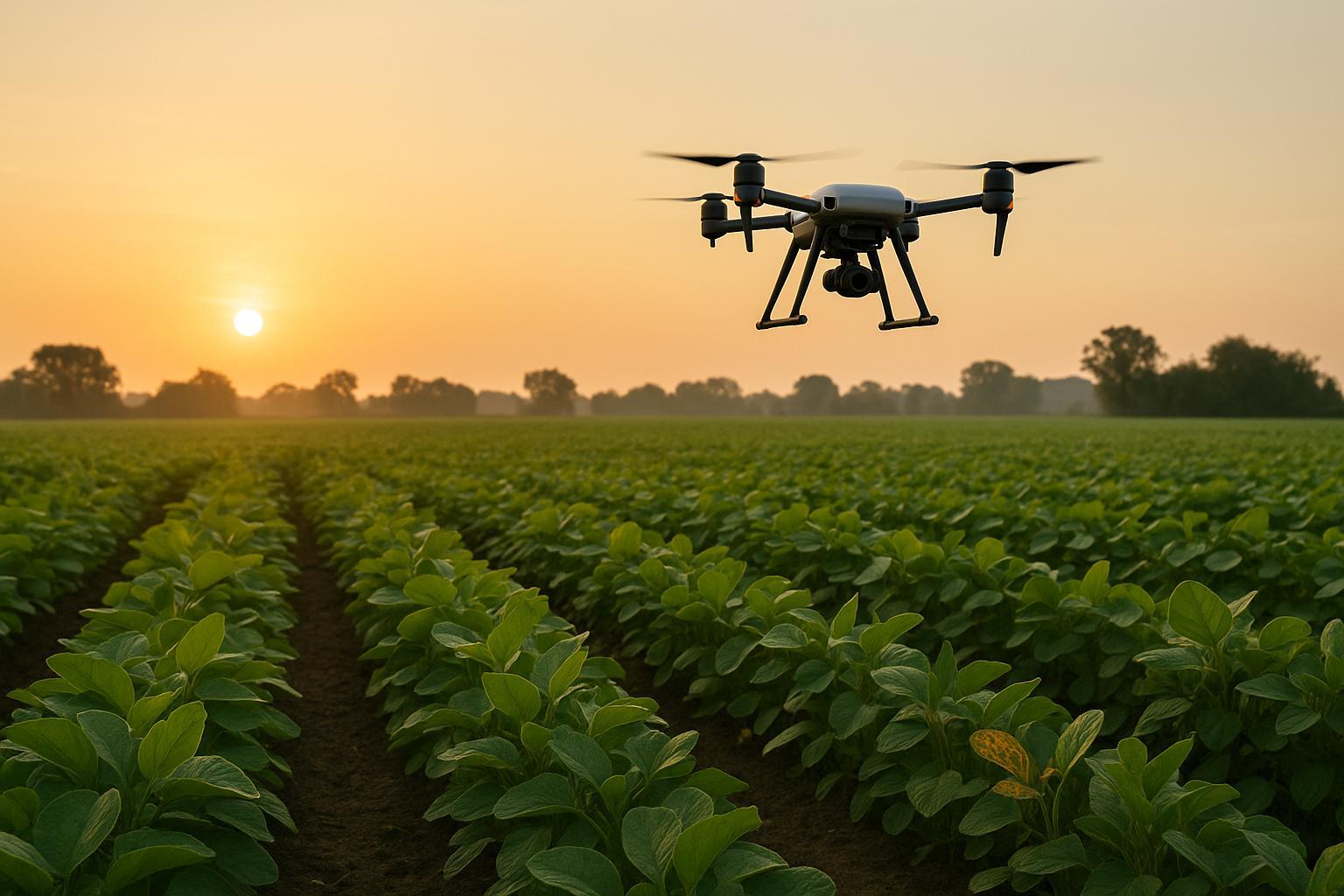
How AI Analyzes Drone Pest Data
AI-driven drones revolutionize pest management in agriculture by enabling early detection and precise treatment, enhancing crop health and sustainability.
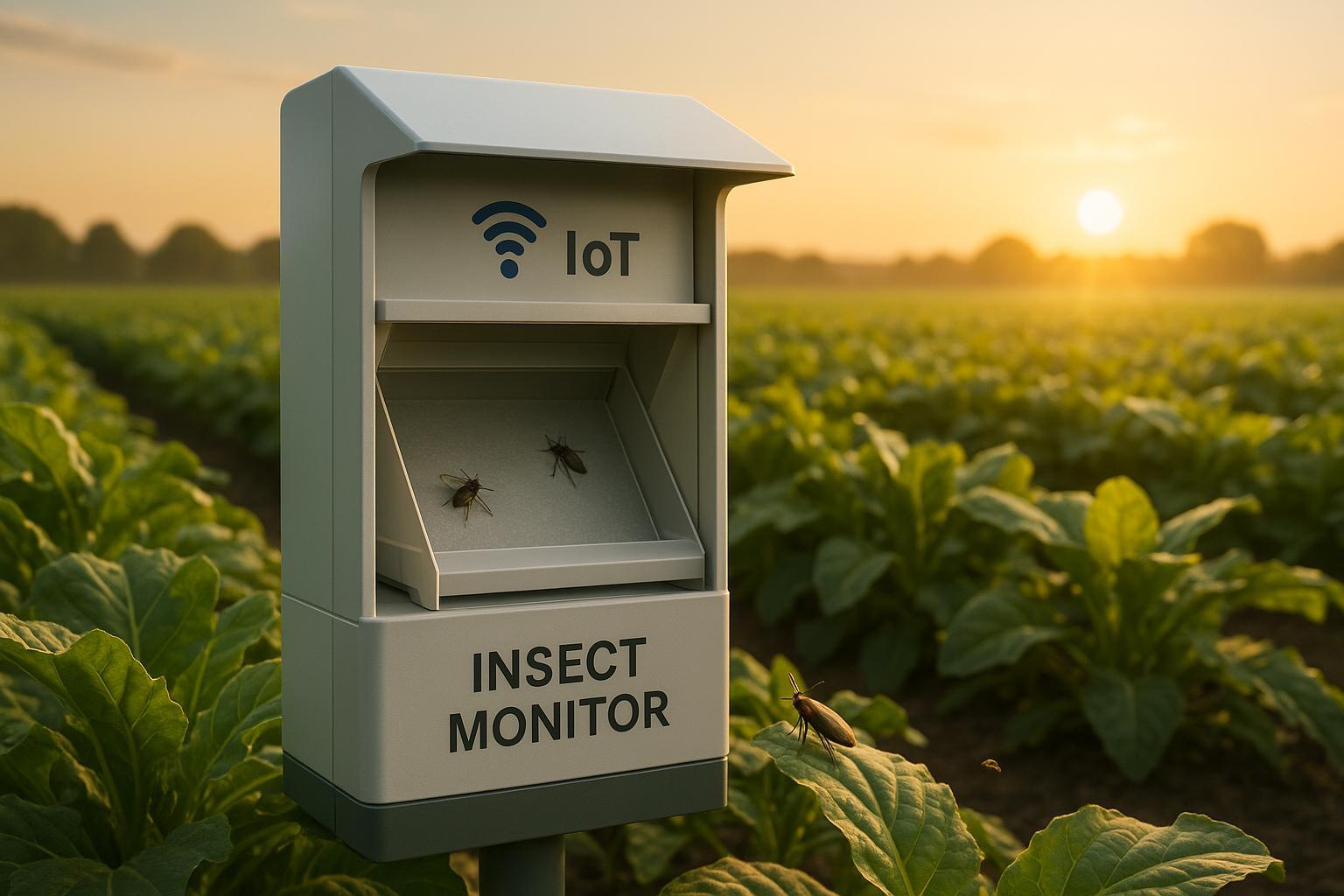
How IoT Calibration Improves Pest Monitoring Accuracy
Learn how IoT calibration enhances pest monitoring accuracy, reduces pesticide use, and ultimately leads to more effective pest management.
Ultimate Guide to Cottage Garden Ideas: Design, Benefits, and Planning Tips
Discover the charm and beauty of cottage gardens with our comprehensive guide. Learn about the benefits, design ideas, and tips for planning your own cottage garden oasis.
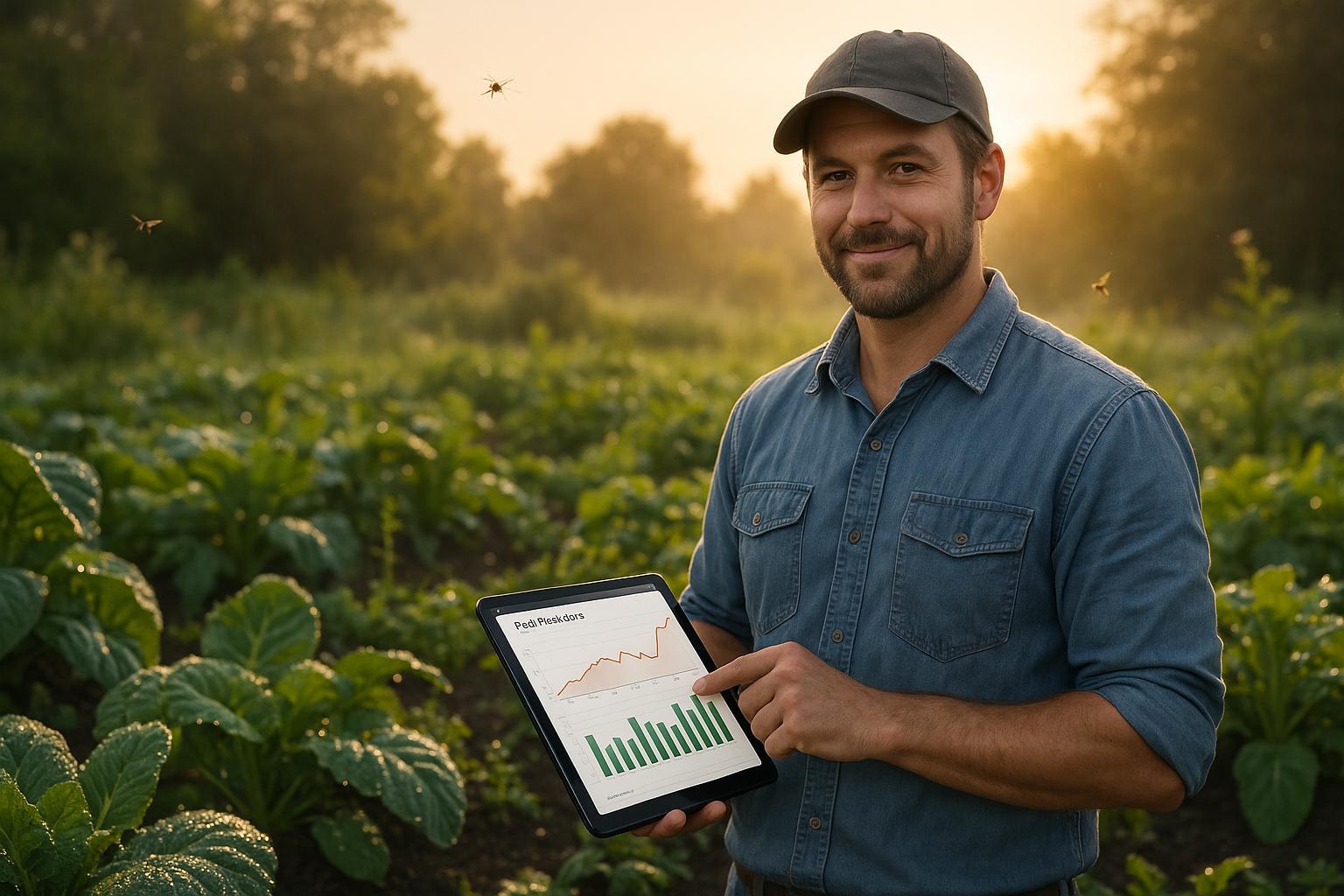
FAQs on AI Pest Prediction Models
Explore how AI pest prediction models revolutionize pest management, offering early detection, reduced pesticide use, and proactive gardening solutions.
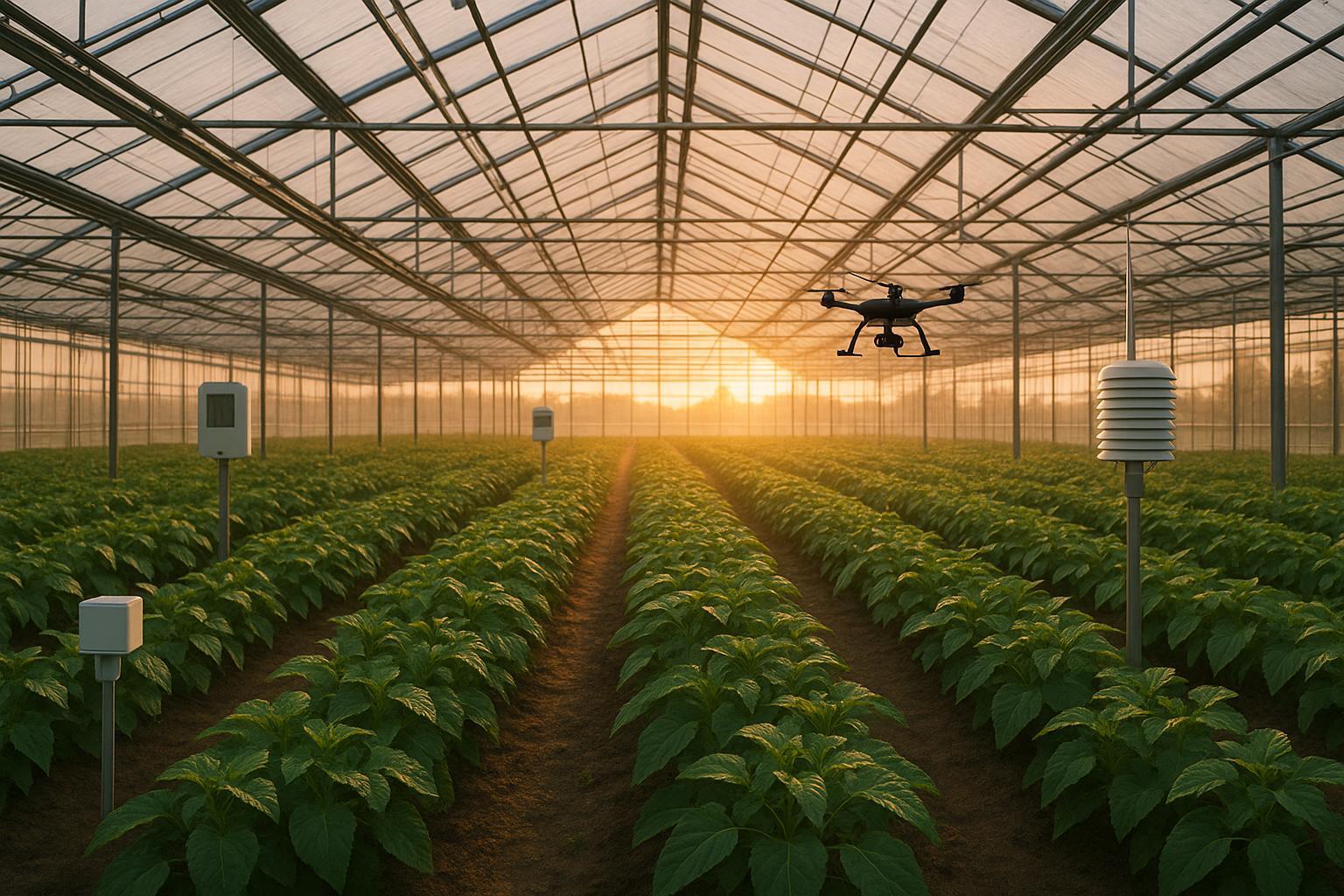
IoT in Biocontrol: Case Studies
Explore how IoT technology is revolutionizing pest management through precision, efficiency, and sustainable practices in agriculture and gardening.
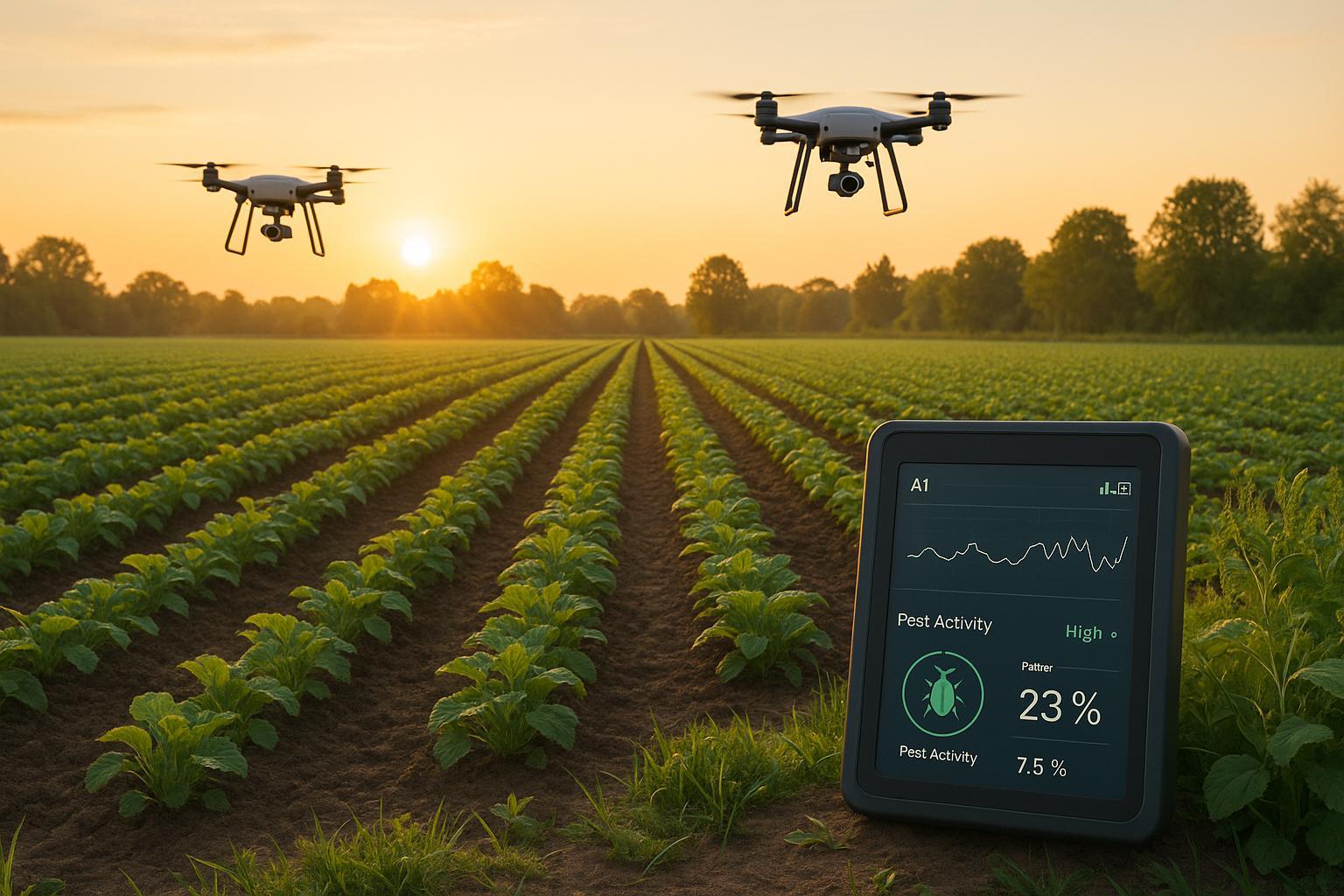
AI in Risk-Based Pest Control Systems
Explore how AI is revolutionizing pest control with predictive technologies that enhance efficiency and reduce pesticide use for farmers and gardeners.